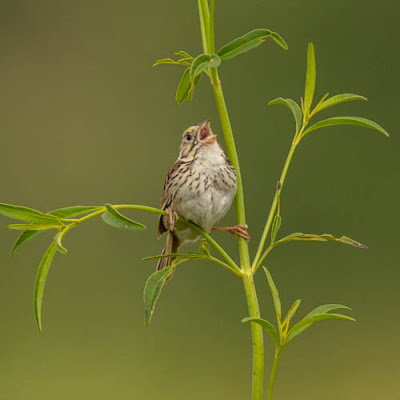When I was in high school one of the “problems” that our forward-thinking teachers anticipated was what people would do with all the free time that the new technology (e.g., dishwashers and vacuum cleaners) would give us. This was the same curriculum that insisted that for the rest of our lives we would need to know how to use a slide rule.
Kim and I have solved that problem by chasing butterflies.
Our latest trip, however, we found ourselves being chased more than we were chasing.
We had two “target butterflies” in mind for our July trip: the Mitchell’s Satyr, a seldom seen denizen of the Sarett Nature Center in southwestern Michigan that flies around July 4, and the Regal Fritillary, rare in much of the Midwest but found, also in July, at Kankakee Sands (officially, Efroymson Restoration at Kankakee Sands) in northern Indiana. We later learned that it is fairly common in Nebraska, but it was rare enough for us. We’d seen and photographed the female a year ago, and this year we were after the males.
We stopped at Sarett on our way to Indiana. It was a hot day, at least by Michigan standards, and we’d had some rain recently, so we encountered what we thought at the time was a lot of mosquitoes. We did see and photograph a few butterflies.
 |
| Eyed Brown |
 |
| Eyed Brown - rarely seen open |
 |
| Baltimore Checkerspot |
 |
| Monarch |
But not the secretive Mitchell’s which, when they are flying, tend to dart quickly above the grasses and bushes before diving down for cover. After several hours of frustrated walking and waiting, we abandoned our search and headed for our b&b an hour away.
Kankakee Sands, a restored prairie of 7,000+ acres, is located in the midst of prime Indiana farmland. This year, however, thanks to 33 inches of rainfall, 20+ inches in June alone, large stretches of that farmland were under water. Puddles abounded. And puddles breed mosquitoes. We’d been warned by Alyssa, who helps run Kankakee Sands and was letting us stay at a cottage on her property, that we would probably need to wear mosquito netting. As photographers, we dismissed this suggestion as unworkable. How bad could they be?
Bad. We ventured out on the afternoon when we arrived and managed to photograph our targeted Regal Fritillary, along with its cousin, the Great Spangled Fritillary. Our task was made difficult by our constant swatting and spraying of DEET, hopefully on our faces and not our lenses. We wore several layers of clothing, including turtlenecks – outfits rarely seen in Indiana in July. We wore them to the restaurant, where folks graciously seemed not to notice.
 |
| Regal Fritillary |
 |
| Regal Fritillary |
 |
| Great Spangled Fritillary |
 |
| Great Spangled Fritillary |
We arose early the next day to photograph birds that inhabit Kankakee Sands. We learned that when you call a Henslow’s Sparrow using the app on my iPhone, mosquitoes flock to the source. We also learned that they flock the same way when you stop calling. Same is true for Grasshopper Sparrows. Fortunately, the latter appeared to sing and be photographed.
 |
| Grasshopper Sparrow |
 |
| Grasshopper Sparrow with Breakfast |
The Henslow’s Sparrows sang abundantly and nearly invisibly from their cover, deep in the prairie grass.
 |
| Henslow's Sparrow |
We had planned to spend four nights at the cottage. But comfortable as the cottage was and gracious as were our hosts, Gus and Alyssa, we only lasted two. Home was only a few hours away. And as he drove along I-94 in the mosquito-free air-conditioned comfort of our car, we decided to pull off the Interstate for another try at the Mitchell’s Satyr.
This time the mosquitoes at Sarett were lighter, or at least they seemed that way after Kankakee Sands! And as we walked along the boardwalk loop where we’d been told our target liked to hang out, Kim spotted one about 10 feet off the path. Sarett is very serious about folks’ staying on the path and not destroying fragile habitat, and we, of course, had left our telephoto lenses in the car, foolishly hoping for close-ups with our macro lenses and, in my case, not wanting to haul a big lens in the heat. So I hustled the half-mile back to the car, grabbed the big lenses, and hustled back to where the Mitchell’s had disappeared back into the undergrowth. Here’s the best we could do:
 |
| Mitchell's Satyr |
As with many of our trips, what we enjoyed the most were surprises, not targets. We loved meeting Gus and Alyssa, and their kids, Forest and Savanna. We are so impressed by the work they are doing for conservation and prairie restoration as well as the lives they are living, in the woods on the edge of the prairie complete with chickens, peacock, goats, dogs, and of course, mosquitoes. And we loved meeting Jeffrey and Sandy Belth. Jeffrey is the author of Butterflies of Indiana, a highly praised book that does everything a field guide should do, and does it well. We became friends in the brief time we spent together on the prairie.
 |
| Jeffrey and Sandy |
And we also saw and photographed birds and butterflies that were not on our short target list, but which amazed us just the same.
 |
| Dickcissel |
 |
| Gray Hairstreak |
That’s how Kim and I have solved the “problem” of so much free time, something we never seem to have enough of.

No comments:
Post a Comment